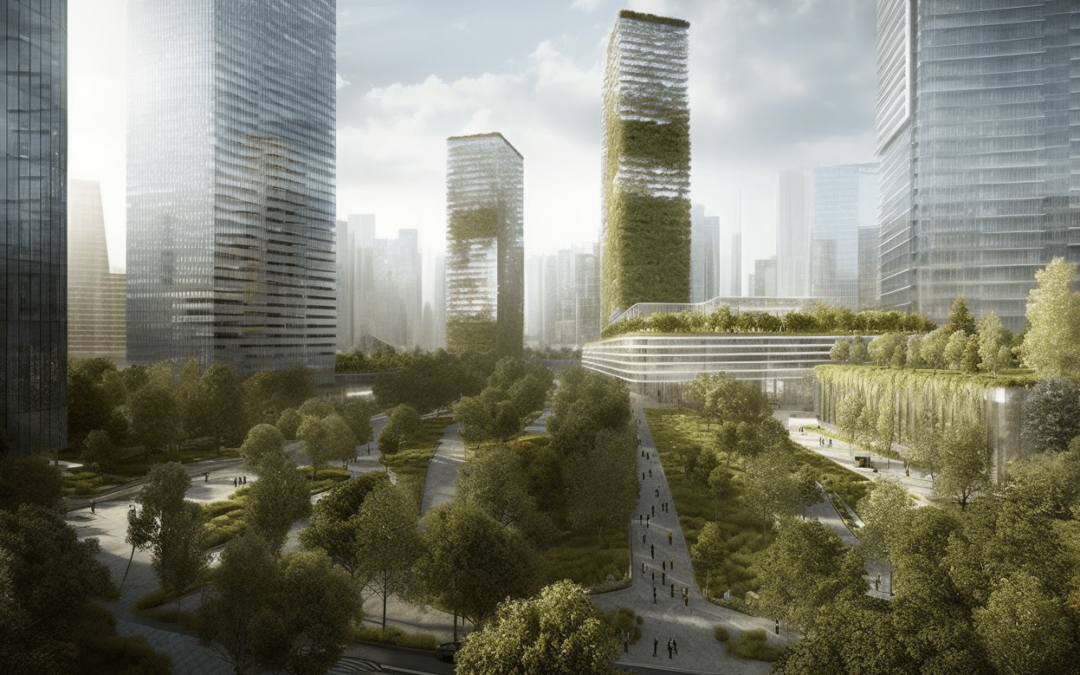The Office ecosystem as we know it is effectively broken. mandates are no mandates. People returning to the office won’t work because the ecosystem surrounding the office, in most cases no longer exists. People don’t think of offices as being part of an ecosystem. They are not stand-alone. They have a variety of goods and services around them to support them. So even if you went back to the office that you came from, chances are that the restaurant that you went to during the day or the bar that you went to at night may no longer be open. Same with the company that may have cleaned your office, they may have let all their staff go.
That’s why bringing people back to the office just creates a new set of problems because the ecosystem that was there to support them no longer exists. It will probably take two to three years to rebuild itself, assuming that this model even happens. An interesting statistic is that for the first time since they’ve been tracking it, the amount of commercial real estate available on the market has shrunk because people are starting the process of conversion and reuse. If the trends continues the issue of return to the office will be academic because there won’t be as many offices to return to.
The Flip Side
As we are seeing, a dip in one area generally translates to a rise in another. In this case, the office ecosystem is giving rise to the community ecosystem. Previously you might have gone to the cafeteria or the Starbucks/Dunkin across the street from your office. Now it may be the bakery or general store down the street from your house. The bar down the street from the office has been replaced with a brewery/winery you can bike to from your house. And you don’t have to go to the mailroom to get your stuff, your mail carrier stops by your house because they want to see your puppies. At least mine does.
A lot depends on what the community ecosystem looks like where you end up working. If we are lucky, it develops organically, but chances are it is going to need some help. Cities have grown in a specific direction for about the past 50 years. Now they need to go in a different direction. Smaller communities are seeing similar changes in direction. The specifics will be different for every community, but they all have some commonalities.
A New Direction
Whether you are part of a city that has essentially lost its central business district or a small hamlet where everyone knows everyone else’s business. There are key areas that need attention:
Mixed-Use Development
Encourage mixed-use developments that combine residential, commercial, and cultural spaces. This diversifies the downtown area’s activities, making it more vibrant throughout the day and evening. Some major cities are already seeing reversed commuting trends where traditional traffic is down, but people are coming into cities more for dining and entertainment. Mixed-use improves livability, and also safety. There are always eyes on the street when an area serves multiple functions.
Incentives for Developers
We need to provide tax incentives, grants, or low-interest loans to developers who invest in downtown revitalization projects. These incentives can make it financially viable for developers to renovate or build in vacant areas. This applies to smaller communities as well. Downtown is going to be the heart of the community. In the city of the future, there may be many neighborhoods rather than specific districts. The sooner we start moving in that direction the better.
Affordable Housing
One of the problems with affordable housing is that it translates to subsidized housing. That’s only part of the problem. Developers typically make more by making bigger houses. Communities need to allow for options based on need, not just for those who can afford the most. We need to ensure that affordable housing options are available in the downtown area. Affordable housing not only supports a diverse population but also attracts residents who contribute to the local economy.
Public Transportation
We need to improve public transportation options to make all endpoints easily accessible. This applies to communities outside cities as well. Well-connected public transportation can reduce the need for personal vehicles and encourage people to visit and live downtown.
Pedestrian-Friendly Infrastructure
Robert Moses’ view of the car as the future of cities is over. We need to create pedestrian-friendly environments with wide sidewalks, bike lanes, and green spaces. This encourages walking and biking, making the area more attractive to residents and visitors. Electric bikes are making their presence known in both cities and smaller communities. And don’t forget, when people are walking, they may be walking with dogs. Don’t forget dogs are people too.
Cultural and Arts Initiatives
The arts are what are going to attract people to any destination. Support cultural and arts initiatives such as galleries, theaters, and public art installations. These can draw people to the downtown area for entertainment and cultural experiences. And it’s not just big names in big cities. It may be big names in small communities, or or hidden gems that only the locals know about. I happen to live in an area where several famous people are very active in the community. And just because they have been in popular TV series or one of the top 100-grossing films of all time, they still participate in local theater and other projects to support the community.
Local Business Support
They are probably looking for direction on what to do more than anyone. They established their business based on a set of patterns that no longer exist. We need to assist local businesses, including small grants, marketing support, and technical assistance. Thriving local businesses add to the area’s character and appeal. They are also a key component of a mixed-use ecosystem.
Community Spaces
People don’t just want paths from point A to point B. They want spaces where they experience sights, sounds, and smells. We need to develop public spaces like parks, plazas, and community centers. These areas can become focal points for community gatherings and events. Again, this applies to both large cities and smaller communities.
Historic Preservation
The older we get, the more history we have. In the movie LA Story, Steve Martin’s character at one point was describing LA, “Some of these buildings are over 20 years old” as if that were a big deal in LA. We take a lot of our history for granted. We need to preserve and restore historic buildings to maintain the area’s character and charm. Historic districts can attract tourists and support local heritage in all communities.
Safety Measures
We all want our communities to be safe. With vacancies rising in major cities so has crime. San Francisco has become the poster child for both. Mixed-use neighborhoods make a difference, but that takes time to evolve. We need to enhance safety through increased police presence, improved lighting, and community policing programs. A safe downtown area is more appealing to both residents and visitors.
Zoning and Land Use Policies
Most zoning is based around cars as the primary mode of transportation and zones for different types of use. Parking policies are among the easiest to overhaul and they set the stage for other changes in most larger cities. All communities need to review and update zoning and land use policies to accommodate mixed-use development and reduce bureaucratic barriers for developers. It’s also important to allow for flexible use of spaces, such as pop-up shops and temporary art installations, to activate vacant areas until more permanent developments occur.
Public Engagement
It’s important to find out what people want. We can’t apply the old rules to the current situation. We need to involve the community in the revitalization process through public meetings, surveys, and workshops. Local input can shape the vision for downtown revitalization. There also needs to be collaboration with private-sector organizations, nonprofits, and community groups to pool resources and expertise for revitalization projects.
Green Initiatives
During the pandemic, cities saw their smog problems reduced and even waterways cleared up. Solar, wind, geothermal, and even nuclear are growing at record pace. The future of communities also requires implementing sustainability measures like green building standards, energy-efficient infrastructure, and green spaces to create a more eco-friendly and attractive downtown area.
Marketing and Branding
If it’s not for work, why would someone come to your city or community? It’s important to develop a marketing and branding strategy to promote the area’s unique features and attractions. Some areas may need to conduct market research to understand the demands and trends in the local economy. Tailor revitalization efforts to meet the specific needs and preferences of the community.
Long-Term Vision
All of this requires a long-term vision that is different than it was 3 years ago. The world is going in a new direction. Cities and towns need to create a comprehensive, long-term revitalization plan that outlines goals, strategies, and timelines for the area’s transformation.



